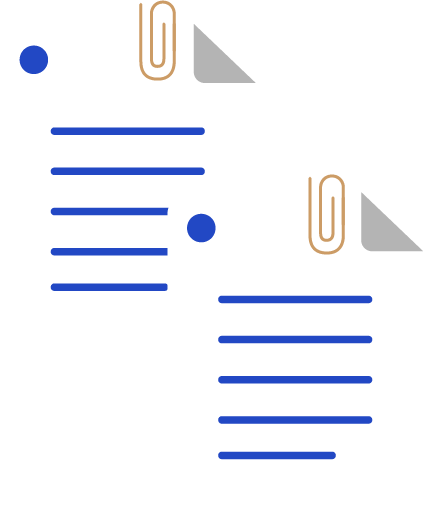Table of Content
Share This Article
- Reading Time: 4 Minutes
- Published: December 13, 2021
- Last Updated: February 11, 2025
One of the most crucial things a small business owner should do, other than selling their goods and services, is complete the reconciliation of accounts. Account reconciliation is the process of comparing two sets of transactions to verify that they are the same. There is undoubtedly nothing exciting about them, but they save you against a range of threats, including overdrawing your account and being a victim of fraud, if you complete them regularly.
What is Account Reconciliation?
Account reconciliation is a vital accounting process, you must have heard, but what is account reconciliation. Account reconciliations are tasks undertaken by accountants to verify if the ledger accounts balance is accurate and complete, usually after an accounting cycle. Account reconciliations, in general, verify an account’s general ledger balance to individual systems, third-party data, and other related documents to verify the balance reported in the general ledger. You appreciate the need for account reconciliation if you’ve ever been charged for something you didn’t buy or found yourself with a bigger bank balance than you should have.
The Importance of Account Reconciliation for Business
If your company uses double-entry accounting, you must reconcile your accounts regularly. The bank reconciliation is an essential reconciliation that your company may undertake. The bank accounts reconciliation guarantees that the closing balance in your bank account is equal to the amount in your general ledger. Ignoring the bank reconciliation procedure can lead to out-of-balance records, missed payments, undiscovered illegal charges, and missing deposits.
Account reconciliations are vital in ensuring the financial statements’ accuracy and consistency. Businesses must reconcile all account balances, including a significant or material mistake. It enables enterprises to quickly detect and do any necessary modifications to the general ledger.
Steps to Reconcile Your Accounts
When you perform bank reconciliation, the first step is to identify the bank transactions causing your books and banking information to be out of sync. It allows you to match up the balances. Then you document what you did to reconcile the accounts.
1. Completing Your Bank Reconciliation
Monthly bank reconciliation is among the most crucial things you should do to maintain your general ledger accurately. That should be done for any bank accounts that have activity throughout the month. Automatic bank reconciliation is available in several accounting software packages, which saves time and effort. You will have to reconcile your bank accounts manually if they aren’t connected to your program.
If you don’t have accounting software, you will need to create a reconciliation form, which can be as basic or as complicated as you want. The form should allow you adequate room to enter any outstanding goods that will reconcile any disparities between the two accounts.
2. Check Your Cash Balances
Your cash balance is of two types: the one on your bank statements and the other in the cash section of your bookkeeping records. The cash on your bank statements and the “cash account” part of your bookkeeping records are the two cash amounts to verify. You have to see if the “ending balance” of the two accounts is the same throughout a specific interval. Even if you maintain precise records, the balance listed in your books will seldom match the amount in your bank account.
One of its reasons is that your bank may impose service costs or bank fees for excessive withdrawals or overdrafts. There could be a delay when moving money from one bank account to another. On the other hand, you could have issued an NSF check (not sufficient funds) and entered the amount in your books correctly, without understanding that the check bounced because of insufficient balance.
3. Adjust Journal Entries
All of your transactions are recorded in journal entries, often called credits and debits. The general ledger contains all of your journal entries. It is most likely an Excel sheet or a manually documented paper if you are not using any accounting software. Keep a record of why there’s a mismatch between your money transfers and your ledger at the end of the accounting cycle for which you are reconciling your account statements. Once these records are set up, you will be able to reconcile your bank account with your general ledger account.
4. Reconcile General and Sub-ledger Accounts
If you are using accounting software, you don’t need to do this step. However, if you are manually handling your accounts, this is necessary to reconcile your general ledger account into a sub-ledger account. It guarantees that both balances are in synch. The best way to start this process is to keep your general ledger and sub-ledger accounts at hand.
5. Analyze Previous Trends
One of the most crucial things you can do for your company is evaluate your comparative trial balance. Reviewing a comparative trial balance can be pretty beneficial if you are processing a large number of transactions. If something seems unusual, check the source documents, such as invoices filed, to see if they were posted correctly and if any revisions are required.
6. Check Updated Trial Balance
The last step is to check all recurring and reversing and see if it has been completed. Once that is done, and your trial balance is accurate, you can rest assured that your documents are appropriately reconciled.
One of the most important things to consider while doing accounts reconciliation is to do it on a timely basis, usually every month. It will be a lot easier to handle them that way. Also, those still managing your accounts manually will find that switching to accounting software eliminates a lot of your current work with handwritten ledgers.

Get customized plan that supports your growth

Thousands of business owners trust Whiz to manage their account
Let us take care of your books and make this financial year a good one.








